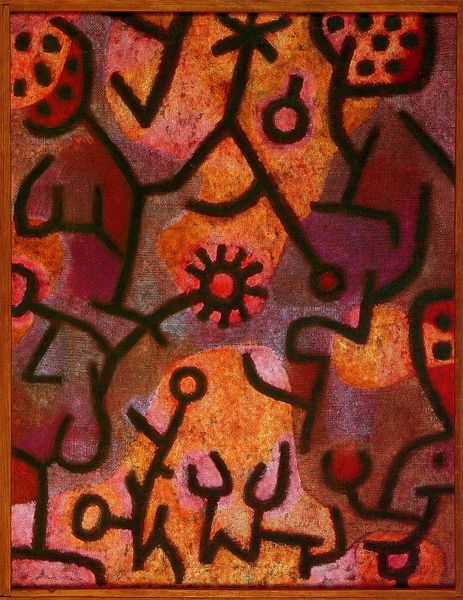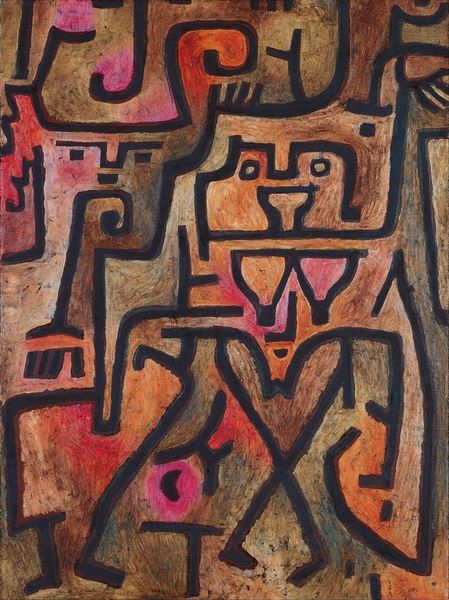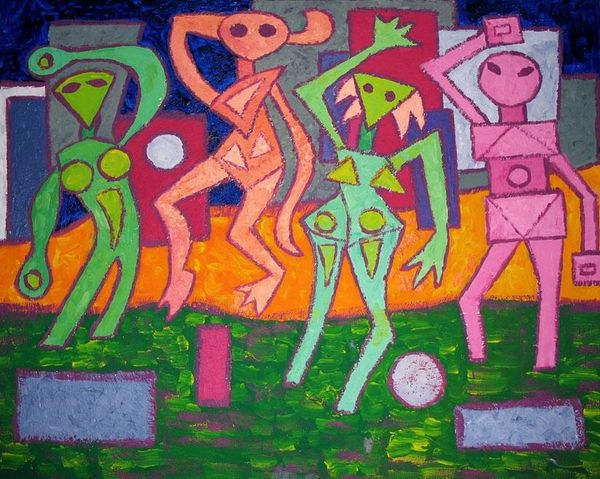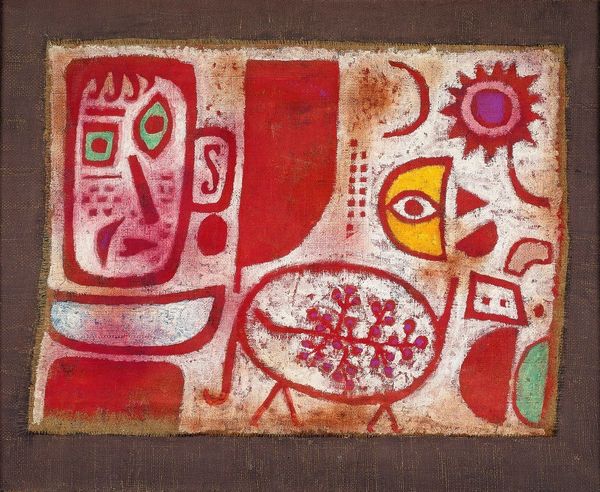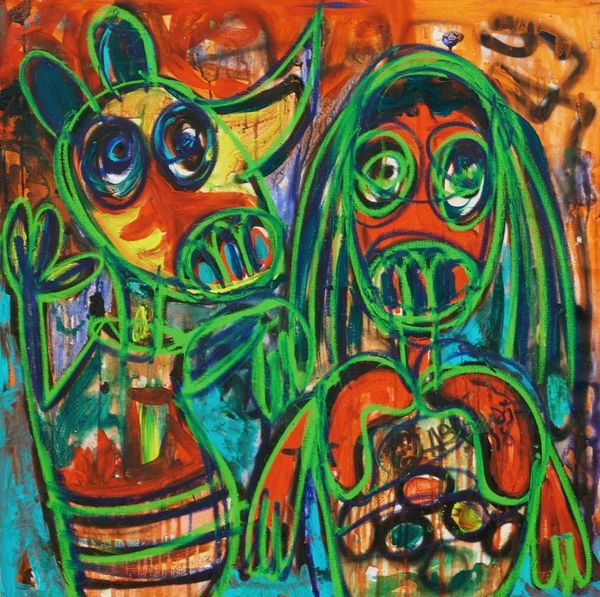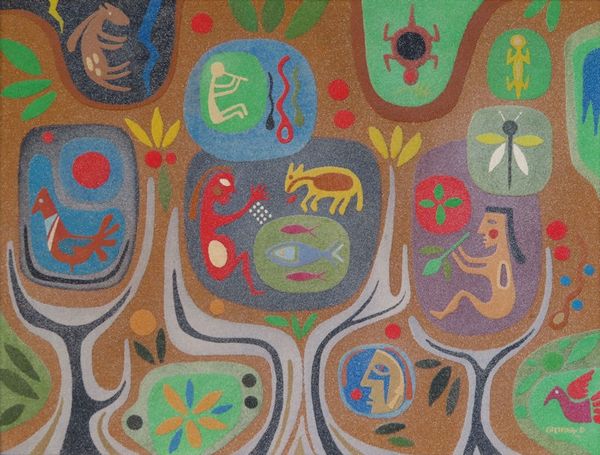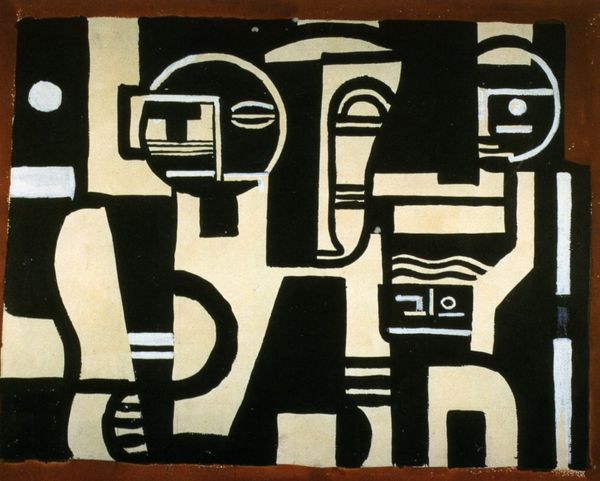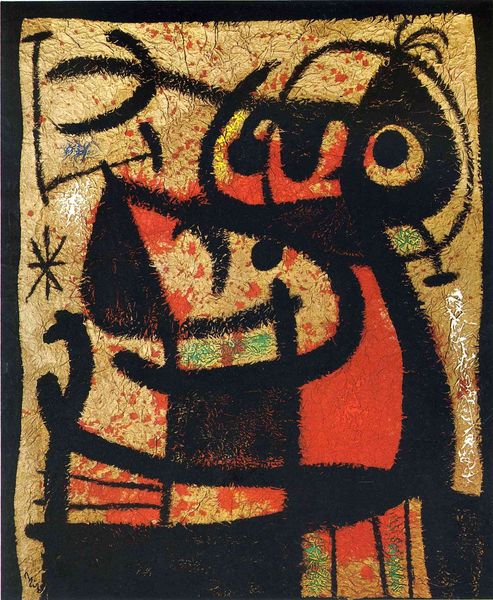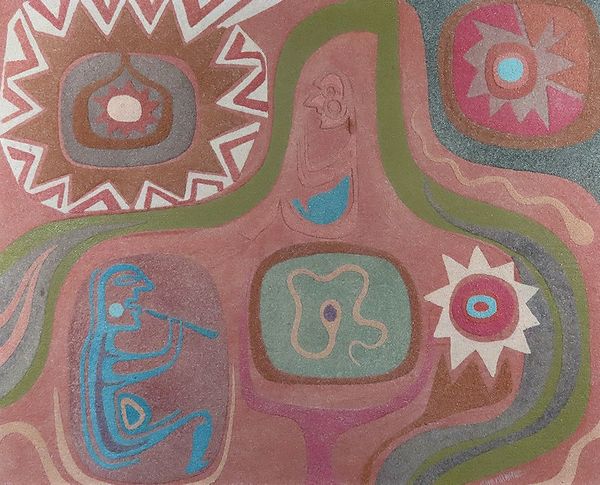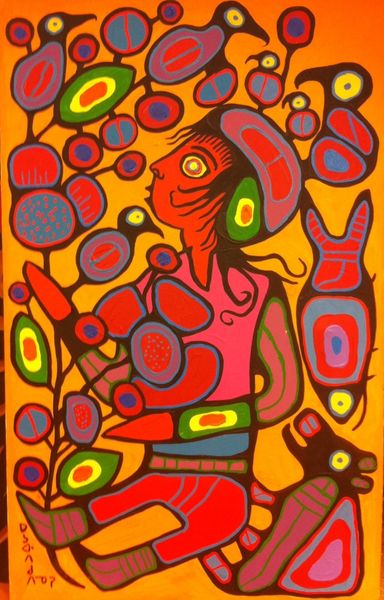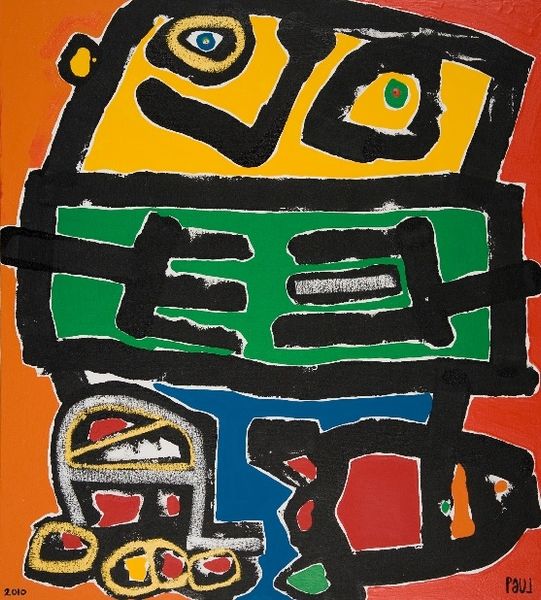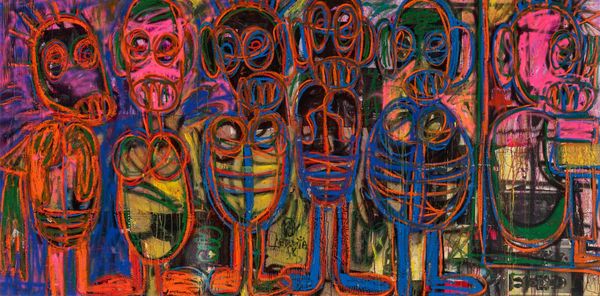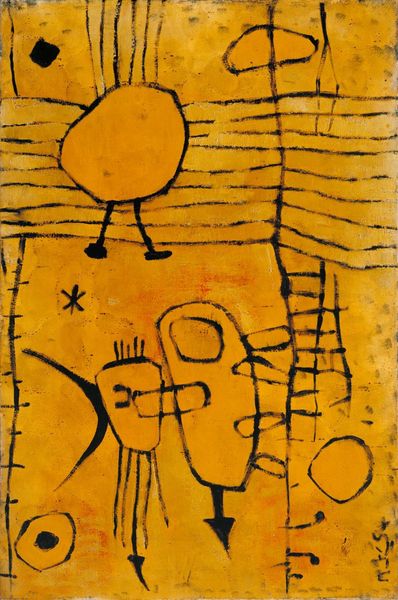
painting, acrylic-paint
#
abstract-expressionism
#
organic
#
painting
#
graffiti art
#
acrylic-paint
#
form
#
naive art
#
abstraction
#
line
#
surrealism
Copyright: Joan Miro,Fair Use
Editor: This is Joan Miró's "Series I," created in 1953 using acrylic paint. It's… peculiar. The black shapes outlined in yellow on a greenish-brown ground almost feel like children's drawings or… well, some kind of coded symbols. What do you see in this piece, focusing on its production? Curator: The childlike quality you mention is crucial. Consider Miró’s engagement with the raw materials. Acrylic, a relatively new medium at the time, allowed for a certain flatness and immediacy. How do you think this directness of application affects the work’s reception? Editor: I suppose the use of acrylic flattens everything out, removing a sense of depth or perspective that one might associate with older painting traditions. This emphasizes the graphic quality, like printmaking. Curator: Precisely! Miró is consciously dismantling the hierarchy between "high" art like painting and more "common" forms of visual communication. It's almost like graffiti, or signs. These simple forms allowed Miró to engage with the contemporary fascination with primitivism without simply appropriating indigenous aesthetics. Editor: So, he’s leveling the playing field, letting the material and the form, almost like children’s drawings or modern symbols, do the talking, instead of relying on artistic virtuosity. Is the surface or background important, then? It is fairly rough. Curator: Absolutely! The background isn’t neutral. Its mottled texture acts as a foil to the crisp black shapes. The work gains additional interest if we consider the mass consumption of goods during that period and Miró’s material engagement with consumerism and production culture in Europe at the time. What kind of artistic environment might have nurtured these aesthetic choices, I wonder? Editor: Well, the shadow of the war probably affected every sphere. Looking at it now, "Series I" is a painting, but the emphasis on the graphic quality feels much more connected to industrial reproduction. Curator: Indeed, we see the hand of the artist deliberately foregrounded to address modernity, questioning boundaries between individual artistry and industrialized creation. Editor: It is much clearer now. This approach allows us to really consider "Series I" beyond just shapes and colours!
Comments
No comments
Be the first to comment and join the conversation on the ultimate creative platform.
